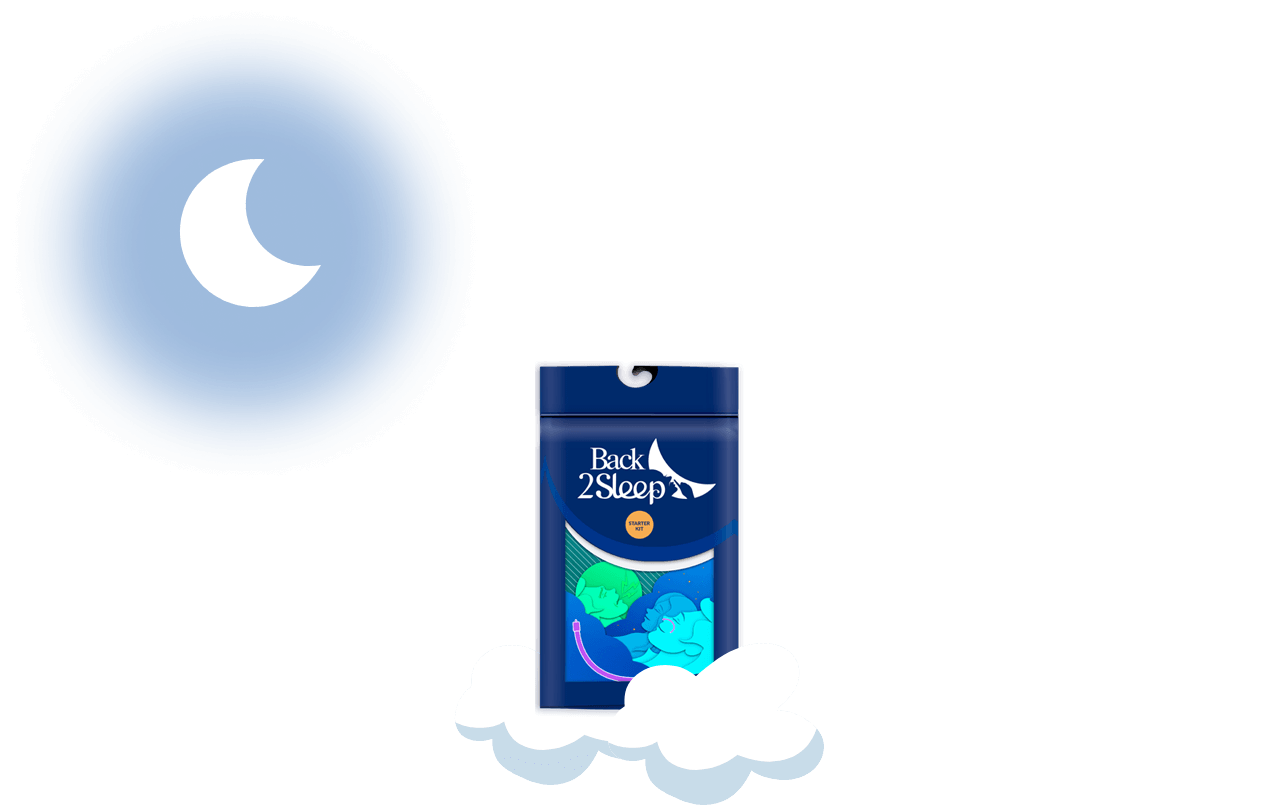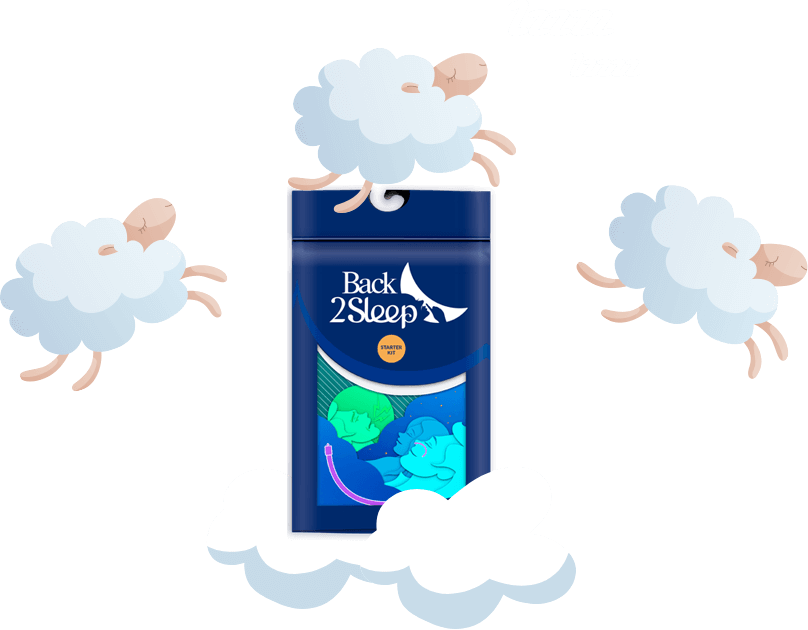Sleep Apnea: The Silent Disorder That Could End Your Life
Understanding the deadly consequences of untreated sleep apnea and how to protect yourself from this widespread but largely undiagnosed killer
Sleep apnea is killing people every single night—yet 80-85% of cases remain completely undiagnosed. This respiratory disorder affects an estimated 936 million adults worldwide aged 30-69, making it more common than diabetes and potentially more deadly than hypertension. Unlike many health conditions that provide warning signs, sleep apnea operates silently, causing irreversible damage to your cardiovascular system, brain, and vital organs while you sleep. The shocking truth? Untreated severe obstructive sleep apnea carries up to 40% mortality within 12-15 years, yet most sufferers have no idea they're at risk. This comprehensive guide reveals the life-threatening dangers of sleep apnea, why it's called both a "silent killer" and paradoxically a "loud killer," and most importantly—the proven solutions that can save your life.

Critical Fact: Between 1999 and 2020, a total of 231,418 OSA-related deaths occurred in the United States alone, with 63% occurring in men. Sleep apnea rarely appears on death certificates, even when it's the underlying cause.
The Shocking Global Impact: By The Numbers
These aren't just numbers—they represent millions of people unknowingly living with a ticking time bomb. Research published in 2019 confirmed that 425 million adults worldwide suffer from moderate-to-severe OSA, with China, the United States, Brazil, and India having the highest prevalence rates.
What Exactly Is Sleep Apnea? Understanding The Deadly Disorder
Sleep apnea is a serious respiratory condition characterized by repeated interruptions in breathing during sleep. These pauses, called apneas, occur when throat muscles relax excessively, causing the airway to collapse and block normal airflow. Each episode typically lasts 10 to 30 seconds, though some extend even longer, depriving your brain and organs of crucial oxygen.
During a typical night, individuals with untreated sleep apnea can experience these breathing interruptions 5, 15, 30, or even 100+ times per hour in severe cases. Your body responds to each oxygen deprivation by triggering an emergency "fight or flight" response, releasing norepinephrine to jolt you awake just enough to resume breathing—though you often won't remember these micro-awakenings.

The Silent vs. Loud Killer Paradox
Sleep apnea has earned two seemingly contradictory nicknames that both perfectly describe its nature:
This dual nature makes sleep apnea particularly insidious: it literally announces itself through snoring, yet remains undiagnosed in the vast majority of cases because people fail to recognize loud snoring as a medical emergency.
The Three Types of Sleep Apnea: Know Your Enemy
🫁 Obstructive Sleep Apnea (OSA)
The most common form, accounting for 85-90% of all cases. Occurs when throat muscles relax, physically blocking the airway despite continued breathing effort.
🧠 Central Sleep Apnea (CSA)
Represents 5-10% of cases. The brain fails to send proper signals to respiratory muscles, causing breathing to stop despite clear airways. Often linked to heart failure.
⚡ Complex Sleep Apnea
Also called treatment-emergent central sleep apnea. Combines both obstructive and central components, making treatment more challenging.
📊 Severity Levels
Mild: 5-15 events/hour
Moderate: 15-30 events/hour
Severe: 30+ events/hour
Severity directly correlates with mortality risk.
Important Note: An estimated 0.9% of adults worldwide have central sleep apnea, amounting to nearly 80 million people globally. While less common than OSA, CSA carries equally serious health risks.
Who's At Risk? The Leading Causes of Sleep Apnea
Understanding your risk factors is crucial for early detection and prevention. While anyone can develop sleep apnea, certain characteristics significantly increase susceptibility:
Primary Risk Factors

Geographic Variations: Interestingly, South Korea shows similar OSA prevalence to the United States despite significantly lower obesity rates, suggesting genetic and anatomical factors play substantial roles beyond weight alone.
How Sleep Apnea Kills: The Life-Threatening Health Consequences
The question isn't whether sleep apnea can kill you—the question is how. Untreated obstructive sleep apnea systematically destroys your health through multiple deadly mechanisms:
Cardiovascular Catastrophe
Sleep apnea represents one of the most significant cardiovascular risk factors, potentially more dangerous than hypertension based on hazard ratios for mortality. Here's why:
The mechanism is devastatingly simple: Every time you stop breathing, oxygen levels plummet while carbon dioxide accumulates. Your body interprets this as a life-threatening emergency, triggering massive stress hormone release that damages your cardiovascular system over months and years.
Metabolic Mayhem
Shocking Connection: Nearly 50% of people with Type 2 diabetes also have obstructive sleep apnea. The relationship works both ways—OSA disrupts insulin regulation and glucose metabolism, while diabetes complications worsen sleep apnea.
Sleep-norepinephrine-release (S-Nore-R) doesn't just raise blood pressure—it also elevates blood sugar and insulin levels hundreds of times per night. This relentless metabolic assault contributes directly to:
- Insulin resistance development
- Type 2 diabetes onset and progression
- Obesity (creating a vicious cycle)
- Metabolic syndrome
Brain Damage & Cognitive Decline
Your brain requires constant oxygen to function and survive. Repeated oxygen deprivation during sleep apnea causes:
Cancer Connection
Emerging research reveals a disturbing link between sleep apnea and cancer. People with sleep apnea have a 5 times greater chance of developing cancer compared to those without the disorder. Chronic oxygen deprivation and inflammation create an environment conducive to tumor growth.
Other Deadly Complications
The damage doesn't stop there. Untreated sleep apnea also causes:
- Gastroesophageal Reflux Disease (GERD): Worsens significantly with untreated OSA
- Pulmonary Hypertension: Right-sided heart failure from lung pressure
- Sudden Death: Cardiac events during sleep from severe oxygen deprivation
- Kidney Disease: Reduced oxygen affects kidney function over time
- Erectile Dysfunction: Vascular damage impairs sexual function
Mortality Reality: Studies show that severe sleep apnea patients die on average 10 years sooner than those without the condition. A 2008 mortality study found that 40% of premature deaths in OSA patients were caused by heart disease—five times greater than those without sleep apnea.
Celebrities Who Died From Sleep Apnea: Real Lives Lost
Sleep apnea doesn't discriminate by fame or fortune. These high-profile deaths brought public attention to the devastating consequences of untreated sleep apnea:
The beloved comedian and actor died from complications related to sleep apnea. His death highlighted the particular dangers for individuals with obesity, bringing mainstream attention to the disorder.
Known as "The Gomer Pyle of Comedy," this popular television personality's death was attributed to complications from sleep apnea, emphasizing the importance of seeking medical help for persistent sleep disturbances.
These tragedies underscore a critical truth: wealth and access to healthcare mean nothing if sleep apnea goes undiagnosed. Regular screening for anyone who snores or experiences daytime fatigue could have saved these lives.
How Do You Know If You Have Sleep Apnea? Warning Signs & Diagnosis
Because most apnea episodes occur during sleep, many sufferers remain unaware they have the condition. Your bed partner often notices symptoms before you do. Watch for these critical warning signs:
🔊 Nighttime Symptoms
Loud, chronic snoring • Witnessed breathing pauses • Gasping or choking during sleep • Frequent awakenings • Night sweats • Dry mouth upon waking
😴 Daytime Symptoms
Excessive sleepiness • Morning headaches • Difficulty concentrating • Memory problems • Irritability • Fatigue despite "full" night's sleep
⚕️ Medical Indicators
Hypertension • Type 2 diabetes • Heart disease • Unexplained weight gain • GERD • Depression • Stroke or TIA history
🚨 Red Flags
Partner reports you stop breathing • You wake up gasping for air • Falling asleep at inappropriate times • Multiple car near-misses due to drowsiness
Professional Diagnosis: The Gold Standard
While screening questionnaires like STOP-BANG (Snoring, Tiredness, Observed apnea, blood Pressure, Body mass index, Age, Neck circumference, Gender) help identify high-risk individuals, definitive diagnosis requires sleep testing:
Critical Screening Guideline: If you have high blood pressure, the Joint National Committee on Hypertension recommends that ALL patients with HBP who snore should be tested for OSA—even without other symptoms. Your snoring could be killing you.
How To Cure Sleep Apnea: Proven Treatment Solutions That Save Lives
The good news? Sleep apnea is highly treatable, and intervention dramatically reduces mortality risk. Treatment approaches range from lifestyle modifications to medical devices and surgical correction:
Lifestyle Interventions: The Foundation
For mild-to-moderate cases, lifestyle changes can significantly improve or even eliminate sleep apnea:
Medical Device Solutions
For moderate-to-severe cases, medical devices provide immediate, life-saving intervention:
| Treatment | How It Works | Effectiveness | Compliance Rate |
|---|---|---|---|
| CPAP (Continuous Positive Airway Pressure) | Delivers pressurized air through nasal/facial mask, keeping airways open | 80% success rate when compliant | 30-60% long-term adherence |
| BiPAP (Bi-level PAP) | Two pressure settings (inhale/exhale) for easier breathing | Effective for CPAP-intolerant patients | Better than CPAP for some |
| APAP (Auto-adjusting PAP) | Automatically adjusts pressure based on breathing patterns | Comparable to CPAP | Often preferred by patients |
| Oral Appliances (MAD) | Mandibular advancement device positions jaw forward | 70-80% effective mild-moderate OSA | Higher than CPAP |
| Nasal Stents (Back2Sleep) | Internal support prevents soft palate collapse | 92% satisfaction for appropriate cases | Excellent due to simplicity |
CPAP Benefits: Continued use of CPAP therapy decreases mortality from ALL causes by 27%. Just one night of CPAP significantly improves cognitive abilities, with benefits compounding over time. However, adherence remains challenging—only 30-60% of patients use CPAP consistently long-term.
Breakthrough FDA-Approved Medication (2024)
In December 2024, a major advancement occurred: The FDA approved Zepbound (tirzepatide) for treating moderate-to-severe OSA in adults with obesity. Combined with diet and exercise, this weight-loss medication showed remarkable results:
- Significantly fewer breathing interruptions
- Improved cardiovascular health markers
- Some patients improved enough to potentially eliminate CPAP need
- Based on rigorous New England Journal of Medicine study
This represents the first medication ever approved specifically for sleep apnea treatment, opening new pathways for patients who struggle with device compliance.

The Back2Sleep Innovation: A Revolutionary Approach to Sleep Apnea
Since its launch in June 2017, Back2Sleep (formerly Nastent™) has been regularly featured in the press for providing an innovative, non-invasive solution to obstructive sleep apnea and snoring. Unlike bulky CPAP machines that many patients abandon, Back2Sleep offers discreet, effective treatment you can actually stick with.
How Back2Sleep Works
The Back2Sleep nasal stent is a soft, flexible silicone tube that inserts into one nostril, extending to the soft palate area. This strategic internal support prevents airway collapse during sleep—directly addressing the mechanical cause of obstructive sleep apnea without external masks, hoses, or electricity.
✨ Immediate Effectiveness
Clinical evidence shows 92% user satisfaction with results typically noticeable from the very first night of use.
🎯 Simple Insertion
Takes approximately 10 seconds to insert. No complicated setup, no technical expertise required—just insert and sleep.
🌍 Travel-Friendly
Compact, portable, electricity-free design makes it perfect for business trips, vacations, or anywhere CPAP machines are impractical.
🤫 Completely Silent
Zero noise means both you and your partner enjoy undisturbed, peaceful sleep every night—no machine hum or mask leaks.
Product Options & Investment in Your Life
Anti-Snoring Starter Kit
Perfect introduction to nasal stent therapy. Includes multiple sizes to find your optimal fit, water-based lubricant, and comprehensive instructions.
- 4 different tube sizes (S, M, L, XL)
- 15-night trial period
- Complete usage manual
- Free delivery available
Back2Sleep Nasal Stent
Specifically designed for sleep apnea treatment. CE-certified medical device that keeps airways open, reduces apnea events, and promotes truly restful sleep.
- Medical-grade silicone
- Proven OSA reduction
- Comfortable for all-night wear
- Pharmacy availability
Cost Comparison Perspective: While CPAP machines typically cost $750+ upfront (without insurance) plus ongoing supplies, Back2Sleep offers effective treatment for a fraction of the cost—and with significantly higher compliance rates due to comfort and convenience.
Get Your Starter Kit - €39Pharmacy Availability
Back2Sleep is available through participating pharmacies across Europe, providing easy access to this life-saving technology with professional guidance on proper sizing and usage.
Find A Participating PharmacySurgical Interventions: When Conservative Treatment Isn't Enough
For cases where anatomical abnormalities cause sleep apnea, or when other treatments prove ineffective, surgical correction may be necessary:
Surgical success depends heavily on proper patient selection. Comprehensive evaluation by sleep medicine specialists and ENT surgeons determines the best anatomical targets for intervention.
The Hidden Victims: How Sleep Apnea Destroys Relationships
Sleep apnea doesn't just harm the person who has it—it devastates the lives of bed partners and families:
Partner Sleep Loss: The average bed partner of someone with sleep apnea loses one hour of sleep per night—often deep sleep interrupted by loud snoring. This amounts to 365 hours (15 full days) of lost sleep per year.
"My wife was ready to move to separate bedrooms after 15 years of my snoring. Back2Sleep saved our marriage—literally. She gets full nights of sleep now, and so do I."
"I was embarrassed about my snoring during family vacations and business trips. Now I can sleep anywhere without anxiety. My confidence has completely changed."
"My husband used to shake me awake because I'd stop breathing for so long. He was terrified I'd die in my sleep. Treatment gave us both peace of mind."
Beyond sleep loss, partners experience chronic anxiety watching their loved one struggle to breathe, strain relationships as romantic feelings diminish due to disrupted intimacy, and develop their own health problems from sleep deprivation.
The Staggering Economic Burden of Untreated Sleep Apnea
Sleep apnea doesn't just destroy lives—it cripples economies:
Healthcare Cost Reduction: CPAP treatment reduces healthcare spending by 50% over 5 years. Broad treatment could save billions in national healthcare costs while dramatically improving quality of life.
The occupational hazards extend beyond financial costs. Sleep-deprived workers experience more accidents, reduced cognitive function, and chronic health issues that compound over time—creating a public health crisis affecting entire industries.
Can You Prevent Sleep Apnea? Risk Reduction Strategies
While genetic and anatomical factors play significant roles, lifestyle choices dramatically influence sleep apnea development and severity:
Maintain Healthy Weight
Preventing obesity is the single most effective preventive measure. Each BMI point increase raises OSA risk substantially.
Exercise Regularly
30+ minutes daily strengthens respiratory muscles and aids weight control, reducing risk even without weight loss.
Limit Alcohol
Avoid alcohol 3-4 hours before bed. Even social drinking relaxes throat muscles enough to trigger apnea events.
Treat Nasal Congestion
Address allergies, deviated septum, or chronic sinusitis. Clear nasal breathing reduces mouth breathing and airway collapse.
Early intervention matters: If you have risk factors, don't wait for symptoms to worsen. Proactive lifestyle management can prevent mild OSA from progressing to moderate or severe disease.
The Future of Sleep Apnea Treatment: Emerging Technologies
Research and innovation continue advancing sleep apnea management:
The sleep wearables market may reach $4.3 billion by 2030, with increasingly sophisticated devices capable of detecting sleep-disordered breathing before clinical diagnosis.
Don't Let Sleep Apnea Steal Another Night—Or Your Life
With 80-85% of cases undiagnosed and a 40% mortality rate within 12-15 years if left untreated, the time to act is NOW. Join over 1 million people who've reclaimed their health and relationships through effective treatment.
Start Your Solution Today - €39✓ 92% satisfaction rate ✓ Results from night one ✓ CE-certified medical device
Sleep Apnea IS A Silent Killer—But It Doesn't Have To Be Fatal
The evidence is overwhelming and undeniable: untreated sleep apnea systematically destroys your health through cardiovascular damage, metabolic disruption, brain injury, and increased cancer risk. With 936 million adults worldwide affected and 80-85% remaining undiagnosed, this represents one of the most significant yet overlooked public health crises of our time.
But here's the empowering truth: sleep apnea is highly treatable. From lifestyle modifications and innovative devices like Back2Sleep to CPAP therapy and surgical interventions, effective solutions exist for every severity level. CPAP use reduces all-cause mortality by 27%. Weight loss can cut apnea events in half. Even simple changes like sleep position adjustment make measurable differences.
Your Action Plan: If you snore, feel tired despite "adequate" sleep, have high blood pressure, or your partner reports breathing pauses, get screened immediately. Early diagnosis and treatment could literally save your life.
Remember the words of wisdom: "Sleep feeds those who have nothing to eat." — Menander. Quality sleep isn't a luxury—it's essential for survival. Invest in your sleep with proven solutions like Back2Sleep's CE-certified medical devices, and reclaim the restorative rest your body desperately needs.
Don't become another statistic in the 231,418 OSA-related deaths. Don't let "just snoring" steal 10 years from your life. Take action today—because tomorrow's good health starts with tonight's good sleep.








